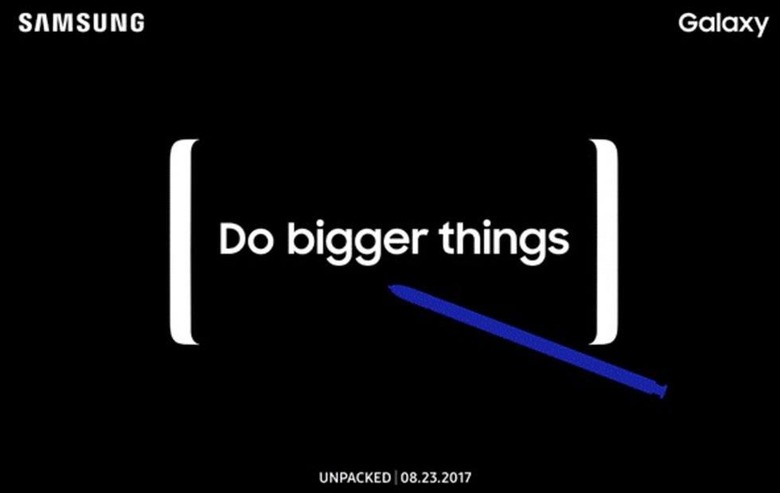iPhone 8 And Galaxy Note 8 Aren't Playing The Same Game
Leaks of the Samsung Galaxy Note 8 and the iPhone 8 this week have basically solidified all the most basic rumors. The Galaxy Note 8 will have a dual-edged display with no front-facing home button. The iPhone 8 – or whatever Apple will end up calling it – will also do away with its standard front-facing home button, and will have a much larger screen-to-body ratio than any iPhone before. But what makes these two titans so different?
Screen Size
The Samsung Galaxy Note 8 will likely have a display size somewhere around 1.4-inches larger than that of the iPhone 8. This is because the Galaxy Note 8 is not tending to the same audience as the iPhone 8. The iPhone 8 will very likely be released with the iPhone 7s and iPhone 7s Plus – that larger device will tend to the needs of the iPhone fans that want as large a display as possible.

The Galaxy Note 8 is rumored to come with a 6.3-inch 3840x2160 Super AMOLED curved Infinity Display. That's Samsung's latest branding of what they used to call "Edge" display – here the back of the phone curves up, too, making the whole device a bit like an envelope.
The iPhone 8 likely has a 5 or 5.1-inch display with Super AMOLED technology It'll reach out to the edges of the device and, aside from the array of sensors, camera, and speaker near the top, all sides will be devoid of non-display space.

The image you see above comes from Weibo user Mobile China Union Official Bo. It contains screen protectors for both the iPhone 8 and the Galaxy Note 8, depicting their grand difference in screen size.
Intent and Impact
The Galaxy Note 8's intent is not all that different from year's past. This device has the best stylus in the game with the S Pen, an accessory that can rest inside the Note's body. The Galaxy Note 8 is gigantic – and at this point at essentially the most ideal spot for those looking for Phablet devices. The original Galaxy Note opened the door for this category to rise.
The next iPhone – the one that's not 7S or 7S Plus – will be made to change the game. Utilizing its two back-facing cameras and sensors both up front and around back of the device, this machine will bring AR to the masses. Not that augmented reality wasn't around for the last few years – but Apple's going to make it HAPPEN.
Above and below you'll see a couple demos of what ARKit (the developer kit for AR with iOS) is capable of. Note that these demos are done with smartphones that've come out before the iPhone 8 – so they're not working at full force, so to speak.
A whole lot of amazing AR action is already available on the device Lenovo Phab 2 Pro – that's using a system called Google Tango.
Above you'll see Google Tango demonstrated through a Lenovo Phab 2 Pro. Through the Google Tango portal, things you will see. Other places – the future, the past – and some old friends, long gone.
Don't get it twisted – both phones will be very powerful. Performance on both devices will be beastly. But they're being made for different end-users and reasons.
Pricing and Release
Pricing for the iPhone we don't yet know – there's reason to believe that it'll cost as much as an iPhone Plus model does now – or more. It really depends on how much the components are costing Apple. And how much importance they're going to place on the features this smartphone carries. It's likely the next big Apple event will occur in early September.

The Samsung Galaxy Note 8 will probably cost right around what the Galaxy Note 7 did last year. That device cost users a full retail price of around $850 with a carrier like T-Mobile, up to $880 (which was AT&T's starting price). We do not expect that the Galaxy Note 8 will suffer the same fate as the Galaxy Note 7 otherwise – and it would not be a shock to find that we've got all the details on August 23rd, 2017.
